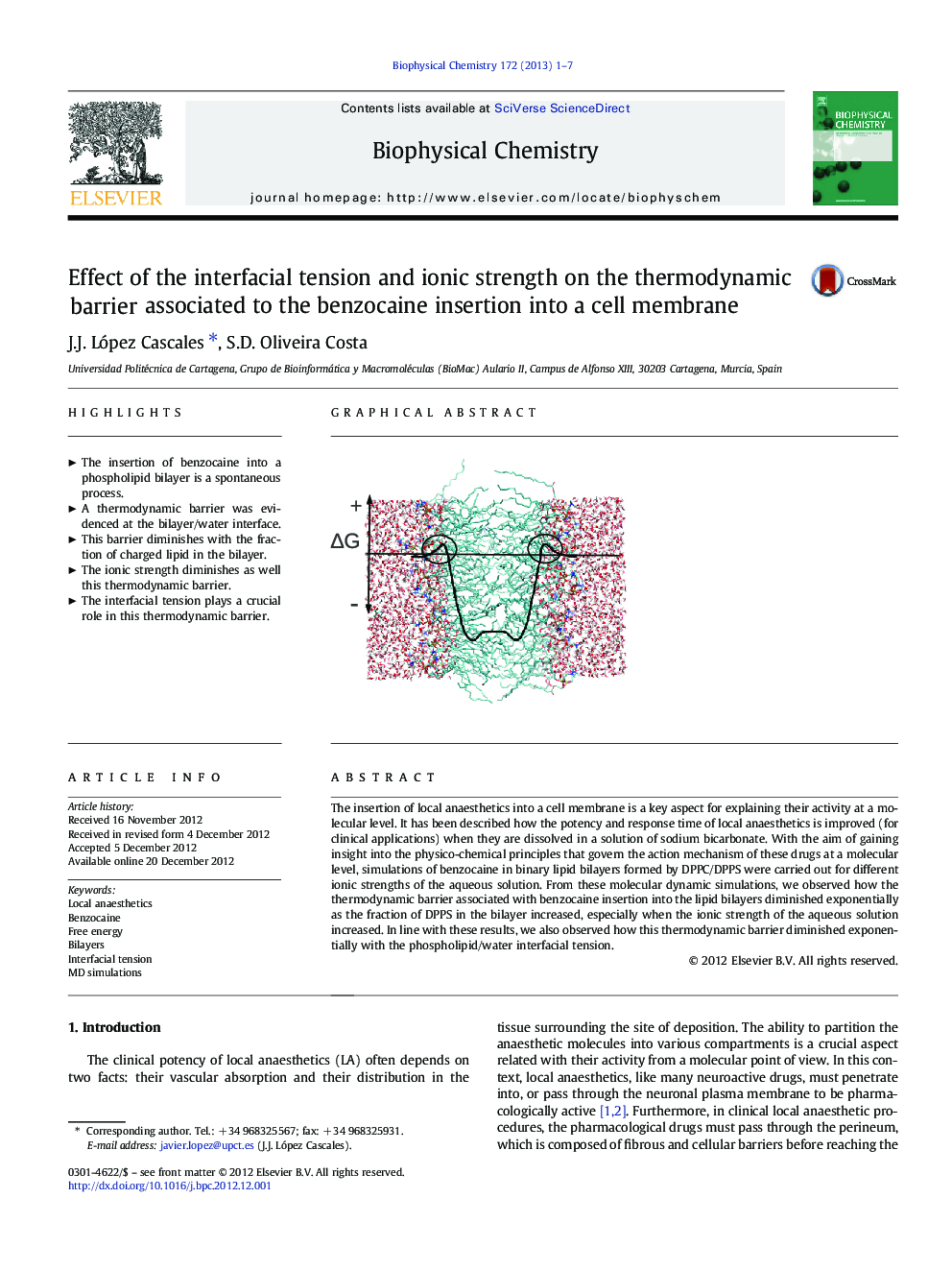| کد مقاله | کد نشریه | سال انتشار | مقاله انگلیسی | نسخه تمام متن |
|---|---|---|---|---|
| 5371160 | 1503938 | 2013 | 7 صفحه PDF | دانلود رایگان |
The insertion of local anaesthetics into a cell membrane is a key aspect for explaining their activity at a molecular level. It has been described how the potency and response time of local anaesthetics is improved (for clinical applications) when they are dissolved in a solution of sodium bicarbonate. With the aim of gaining insight into the physico-chemical principles that govern the action mechanism of these drugs at a molecular level, simulations of benzocaine in binary lipid bilayers formed by DPPC/DPPS were carried out for different ionic strengths of the aqueous solution. From these molecular dynamic simulations, we observed how the thermodynamic barrier associated with benzocaine insertion into the lipid bilayers diminished exponentially as the fraction of DPPS in the bilayer increased, especially when the ionic strength of the aqueous solution increased. In line with these results, we also observed how this thermodynamic barrier diminished exponentially with the phospholipid/water interfacial tension.
Highlights⺠The insertion of benzocaine into a phospholipid bilayer is a spontaneous process. ⺠A thermodynamic barrier was evidenced at the bilayer/water interface. ⺠This barrier diminishes with the fraction of charged lipid in the bilayer. ⺠The ionic strength diminishes as well this thermodynamic barrier. ⺠The interfacial tension plays a crucial role in this thermodynamic barrier.
Journal: Biophysical Chemistry - Volume 172, February 2013, Pages 1-7
